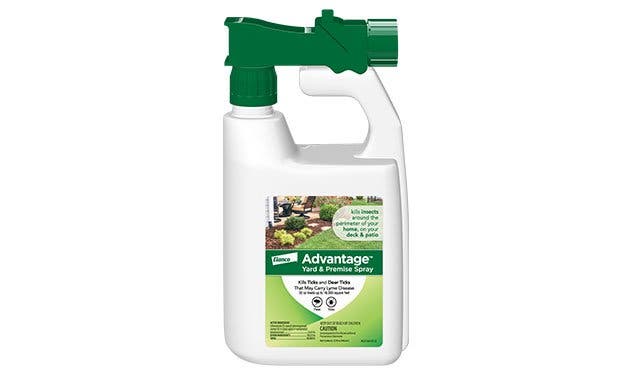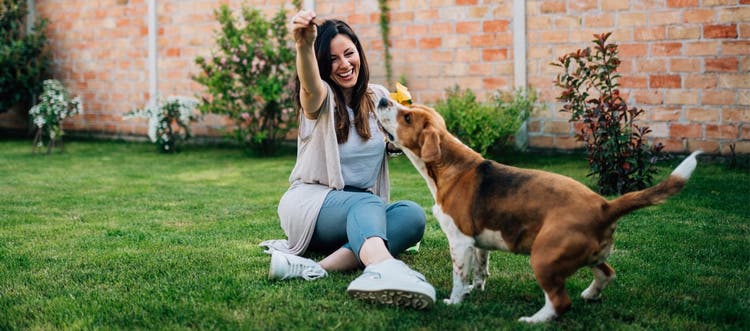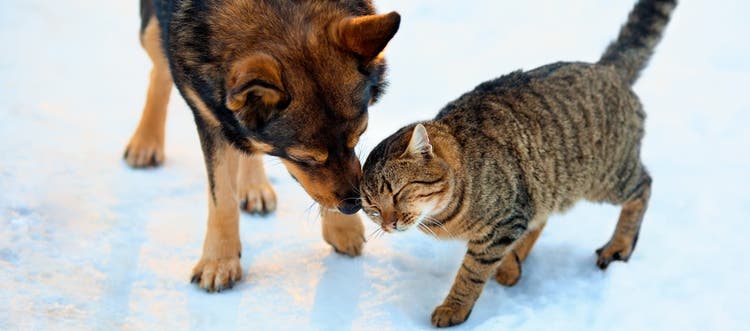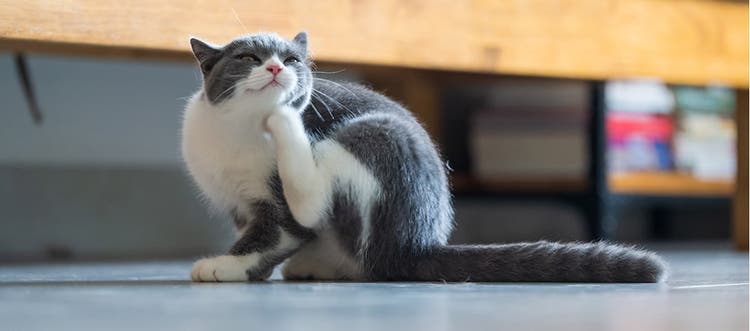A flea infestation begins outside. Protect your pet by helping prevent fleas in your yard with 3 easy steps.
No one wants fleas in their house, but did you know that most flea infestations begin outdoors? Your backyard can be the gateway to bringing fleas inside the house, either via dogs or cats who spend time outside, or on your own shoes and clothing (meaning even indoor cats are at risk). So limiting fleas' ability to infest your yard is a great first step to helping keep them away from your pet and in your house. Follow these three simple steps to help deter fleas in your yard.
Step 1: Maintain your yard.
Fleas thrive in damp locations with ample shade, which means it's important to address long grass, piles of clutter or damp patches on your lawn. To make your yard inhospitable for fleas or ticks, try the following tips:
- Mow frequently: Trim your lawn once a week to allow more sunlight to reach the ground, preventing it from becoming too damp. Taking this step also preps your lawn for a flea treatment — shorter grass allows the treatment to reach the fleas and their developing life stages on the ground (see step 2 below).
- Prune bushes: Likewise, overgrown bushes and other large plants provide a moist, shady environment ideal for fleas, so keep them cut neatly. Sunlight dries fleas and their life stages out, so it's important to keep things short and well pruned to allow for sun exposure.
- Pick up debris: Piles of wood, rocks or leaves can be flea havens. Clear these away and don't let them accumulate.
- Keep things tidy: Make sure sheds are closed and keep everything tidy around kids' play equipment, along fences and in crawl spaces under decks to prevent fleas from hiding out in those locations.
- Minimize wildlife visitors: Since animals like raccoons, opossums, rabbits, foxes and other small rodents can also carry fleas into your yard, keep them out by repairing holes in fencing, putting lids firmly on trash cans and don't leave any uneaten food outside.
Step 2: Treat your yard.
While they can't prevent fleas, outdoor flea treatments can help kill the insects before they reach your house. Of course, you can hire a professional to treat your yard, but if you choose to do it yourself, be mindful of the following:
- Read and follow the instructions carefully.
- Wear protective clothing, per label recommendations.
- Ensure the yard is clear of pets, children and toys.
- Focus on the perimeter of the yard, especially around the fence line, as well as shady spots or areas your pet frequents (areas of the yard that receive plenty of sun exposure won't likely need to be treated).

Step 3: Help protect your pet from fleas.
Unfortunately, there's no way to completely prevent fleas from entering your yard. So back up all your hard work preparing your outdoor space by putting flea protection on your pet.
While fleas are at their worst during the warmer months, they can threaten your pet year-round. So help your pet avoid flea infestations with a topical treatment or a flea collar. Both methods can kill fleas on cats and dogs, but they have different uses and benefits:
- Spot on treatments: These are easy to apply at home and can be found at veterinarian offices, pet stores and online retailers. When administered topically, they spread over the pet's body to kill fleas through contact, which means fleas don't have to bite the pet to die. The size of the tube you use will depend on how big your pet is, so check the product packaging to find the correct size according to weight, as well as application instructions.
- Flea collars: Flea collars might look simple, but they can effectively kill or repel fleas for an extended period of time. Depending on the variety, flea collars can protect pets from fleas for 90 days up to 8 months, and they begin working within 24–48 hours. Flea collars are available through your veterinarian or at most major pet retailers — check the packaging carefully to make sure you are using the correct type of flea collar for your cat or dog.
Flea bites can cause significant health problems for your cat or dog. But by following these steps, you can help treat a flea infestation in your yard and deter them from other parts of your home.

Advantage® Yard & Premise Spray
Kills fleas, ticks and other insects in your yard and around the perimeter of your home. Not for use on pets. Use as directed.







